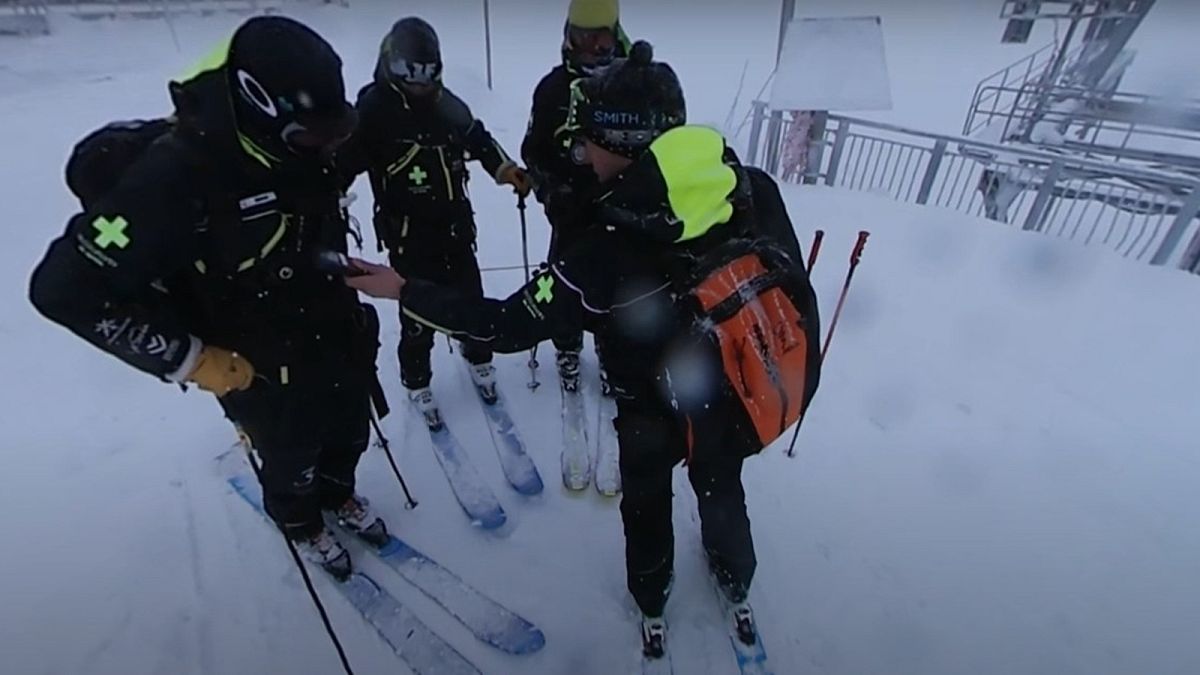Explosives powerful enough to blow up a house are being used to keep skiers safe from the risk of avalanches.
Once again this season, the Alps has been rocked by avalanches that have claimed several lives off piste.
In winter resorts, the safety of skiers is paramount.
Before the opening of the ski-runs, everything is done to provide perfect conditions and eliminate risks.
We went to Courchevel, in France, to follow security operations for two days.
Ski patrol members play a central role. They are out early in the morning to assess conditions and evaluate potential dangers at the ski resort.
❄️☀️❄️ #winterishere#courchevel#cvlmoment#letscourvheveltogether#3vallees#sunny#alpshttps://t.co/LWmeQFjI5dpic.twitter.com/zzie5b8aJ5
— Courchevel Officiel (@courchevel) March 27, 2017
At daybreak, one of their tasks is to trigger controlled avalanches due to the dangerous build-up of snow overnight.
They use explosive charges powerful enough to blow up a house to do this, before the ski-runs are opened.
“We connect the charge to the safety line,” explained team supervisor Nicolas Gros.
“The fuse burns one metre every 90 to 120 seconds.
“It’s the minimum for carrying out an explosion.
“You always have to be calm to do this job.
“There are very specific actions to be done. I make sure it is burning and I throw it to the necessary place.”
Courchevels #snow#cannons are busy every night to keep the #slopes open https://t.co/INrU13BrfA#courchevel#winter#skipic.twitter.com/xSMe9ANqdy
— Courchevel Chalets (@1Courchevel) January 16, 2017
Patrol members can also create avalanches simply by skiing on slopes in sensitive areas where snow has accumulated.
The patrol teams all have safety equipment, such as location devices and avalanche airbags.
The Courchevel teams can also use gas pipes, installed throughout the ski resort in hard-to-reach places, to trigger avalanches.
Triggered from the control station at the bottom of the resort, a spark causes a powerful detonation at the end of the pipe.
The shock wave then causes an avalanche.
François Martinal is in charge of training dogs used to find avalanche victims under the snow.
“An avalanche dog is a dog trained to pick up the smell of a human body under a covering of snow,” he said.
“From being a puppy, the dog is trained to search for this smell and to focus on it. A dog can be operational from 15 months. But I think they are really effective form around two-years-old.”
Courchevel is one of the oldest French resorts, and last year celebrated its 70th birthday.
SKI SHOW CE SOIR SPECIAL 70 ANS DE COURCHEVEL 18h30
TONIGHT SKI SHOW FOR THE COURCHEVEL 70TH BIRTHDAY 6.30pm pic.twitter.com/9WllBEmO72— Courchevel Officiel (@courchevel) February 21, 2017
Director, Thomas Thor-Jensen, said: “The Courchevel ski resort has more than 100 ski-runs which equates to about 150 km.
“It needs 500 employees to function properly, from the start of December until the end of April. With a turnover of more than 60 million euros, our net profit is about 5 million euros.
“All the rest is ploughed back into the business – in salaries, operating costs and investments.
“That being said, the myth of so-called “white gold” still exists – but it is less attractive than in previous days!”
At the end of last season, France was toppled from the top spot as the most frequented skiing area in the world by the United States, where more than 53.9 million skier visits were counted.
France remains the most popular ski area in Europe, with 52 million skier visits, ahead of Austria (49.9 million).
